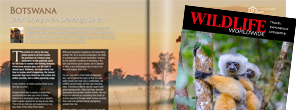Comprising four national parks, stretching from the mountains to the sea, the South West New Zealand World Heritage Area is a site of pristine wilderness.
Also known by its Maori name of Te Wāhipounamu, this UNESCO World Heritage site comprises of four of the country’s national parks and covers ten percent of the total land area of New Zealand, making this is one of the great natural areas of the world. A place of pristine wilderness, the heritage area stretches from the mountains to the sea and is a stronghold for rare plants and wildlife. Endangered native bird species can be found here including three species of kiwi; the Okarito brown, Haast tokoeka and Fiordland tokeka along with the rare and flightless takahe bird.
The four national parks which create the South West New Zealand Heritage Area include:
Westland Tai Poutini: home to Franz Josef and Fox Glacier in Glacier Country. This national park highlights the beauty and contrasts of the South Island, extending from the peaks of the Southern Alps where the glaciers form, reaching down to the remote beaches of the West Coast. Along with these scenic landscape contrasts are also the wildlife contrasts: there are not many places on earth where you can be birdwatching for alpine species such as the kea and within a couple of hours be on the coast viewing fur seals!
Aoraki Mount Cook: adjoining the neighbouring Westland Tai Poutini national park, Aoraki/Mount Cook is an inland park characterised with dramatic peaks of the Southern Alps and glacial lakes. Mount Cook is the tallest peak within Australasia and was used by Sir Edmund Hillary to develop his climbing skills before his ascent of Everest. Sir Edmund is not the only hardy climber in the area; the tahr, a goat-like species, can often be seen along walking trails and is an excellent climber. Chamois and red deer can also be seen in the park and in the summer months mountain flora is in abundance.
Mount Aspiring: for film buffs visiting the area, Mount Aspiring may look familiar as it was used as the location of ‘Isengard’ in the Lord of the Rings movie franchise. Away from the big screen, New Zealand’s third largest national park is the perfect location for those with an interest in natural history. Over 59 bird species have been recorded here, of which 45 are New Zealand natives, together with more than 400 species of butterflies and moths. The country’s only native land mammal - the long-tailed bat - can also be found roosting in mature red beech forests within the national park.
Fiordland: the most southerly and westerly of the four national parks that make up the world heritage area, Fiordland National Park is home to the iconic Milford Sound with its spectacular Mitre Peak greeting visitors to the fiord, together wtih the more remote and serene Doubtful Sound. The fiords are rich with marine wildlife and a visit may include sightings of bottlenose, dusky and Hector’s dolphins, along with New Zealand fur seals and little blue penguins. If you are lucky you may even spot the rare Fiordland crested penguin. As well as the jagged coastline of the fiords, the inland area of the national park is studded with mountain peaks and stunning lakes, with the lakeside towns of Te Anau and Manapouri providing a perfect base in which to explore the national park.
Key info
- Ideal for viewing: Okarito brown kiwi, little blue penguin, takahe, bottlenose dolphin, long-tailed wattled bat
- Where: South Island, New Zealand















